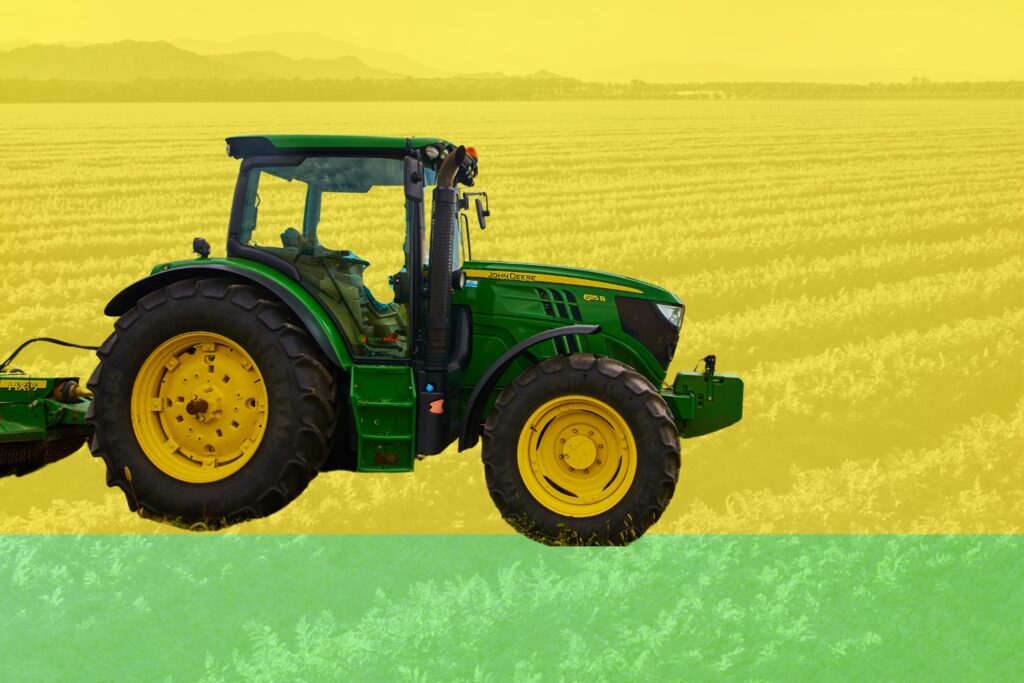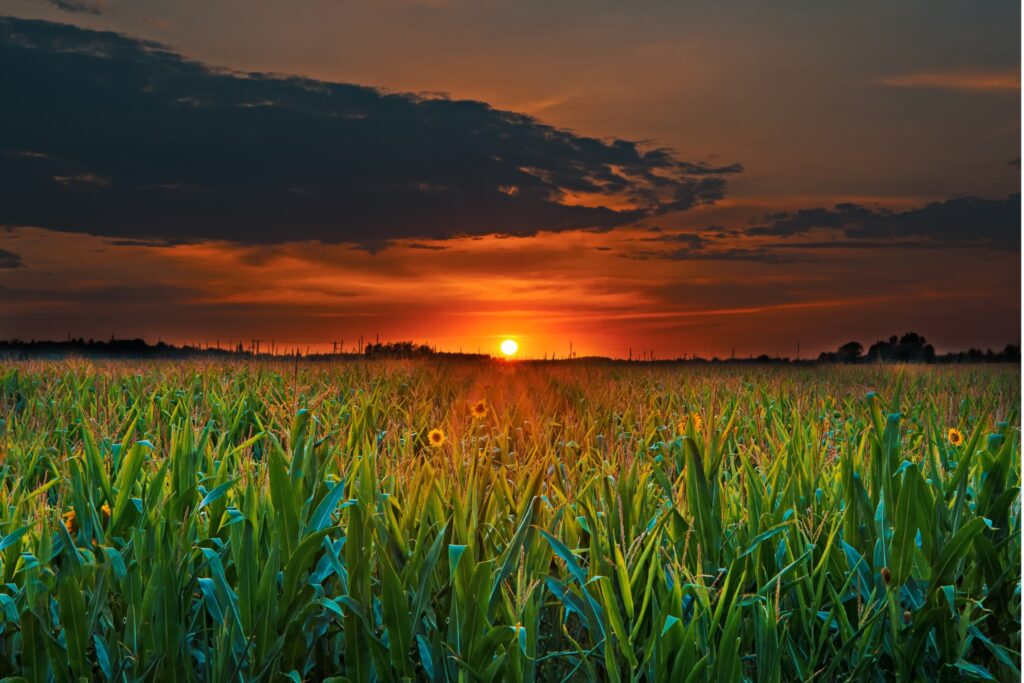Here’s the Most Important Climate Bill of 2024
The Farm Bill proposal being pushed by House Republicans cuts climate programs and boosts factory farms. Congress should listen to the hundreds of chefs who are calling for climate fixes.

Normally, you don’t want too many cooks in the kitchen. It spoils the broth, as the saying goes. But when it comes to debating, amending, and rewriting the U.S. Farm Bill, lawmakers in Congress need all the help they can get. Congress should listen to the hundreds of chefs and food industry pros who are asking them to include climate programs that help farmers implement sustainable practices and diversify supply chains.
The Farm Bill, which is supposed to be reauthorized by Congress every five years, sets national food and agricultural policy—everything from environmental conservation programs to protections for American farmers to food assistance for low-income families. There was talk back in 2023 about how the Farm Bill would be “the most important climate bill” of the year, because of the connection between carbon, methane, and agriculture. Congress missed its 2023 deadline and passed an extension so now the Farm Bill will be the most important climate bill that Congress touches in 2024. The House Agriculture Committee takes up the five-year bill, known officially as the “Farm, Food and National Security Act,” on Thursday.
Committee members have their work cut out for them. The bill’s 924 pages of text was released by House Ag Chair G.T. Thompson, a Republican from Pennsylvania, last week. This Republican proposal still includes lots of money for conservation, but it eliminates the focus on climate change—basically removing the guardrails that require that the money be spent on reducing greenhouse gas emissions. That’s a big reason why most House Democrats and a range of advocacy groups oppose this version.
Perhaps the most unexpected and compelling show of opposition comes from restaurant kitchens across the US. More than 520 chefs from 50 states signed a letter urging lawmakers to revise the bill to properly address the impacts of climate change. These chefs include restaurateurs, cookbook authors and TV personalities like Padma Lakshmi, José Andrés, Mary Sue Milliken, and Rick Bayless, as well as many lesser-known but well-respected industry figures like Michael Cimarusti, who runs the Michelin-starred Providence in Los Angeles. These are people who have made sustainability a part of their life’s work and their business plans. These chefs also know a lot of farmers—personally and professionally. They may actually have more day-to-day interactions with farmers than any of the Ag Committee members who will vote on the legislation.
The chefs join NRDC, Earthjustice, and others in demanding that Congress safeguard the $13 billion in funding from the Inflation Reduction Act, which was the first law to directly tie agricultural funding to the adoption of climate-smart growing practices. These dollars were intended to transform agriculture and encourage conservation easements used to avoid, capture, or sequester greenhouse gases, not see it raided for other purposes. “These historic investments maximize the economic impact that food producers have on supporting the U.S. economy,” their letter reads. “This funding is crucial in combating climate change, centering soil health, protecting businesses and the supply chain that restaurants rely on, and ensuring the affordability of produce for consumers.” Farmers widely support funding for climate-smart practices like cover crops because they’ve seen firsthand the effects of extreme weather on their livelihoods, and they want help making their fields more resilient to climate change.

Farming—from farm to table—contributes 25% of worldwide greenhouse gas emissions. That puts it on par with the industrial and power sectors. In the US, agriculture takes up almost one billion acres of land—two-thirds of the contiguous United States—and contributes 30% of greenhouse gas emissions. Half of that is for growing food for people to eat, and the other half goes to growing food for animals to eat, according to Peter Lehner at Earthjustice, who has written the book on all this. This is why the Farm Bill is an enormous opportunity to affect what we grow and how we grow it.
Some also see it as an opportunity to insert controversial provisions that won’t pass on their own, like the so-called EATS Act (Ending Agricultural Trade Suppression Act) which Republicans have included in the Farm Bill as a giveaway to factory farms. The proposal would overturn state animal welfare regulations for beef and pork—though notably not egg products.
The EATS Act is an attempt to reverse California’s Proposition 12, an important animal welfare law that pork producers have opposed every step of the way. (The “radical” thinking behind Prop 12 is that breeding sows should be able to turn around in their enclosures.) The Supreme Court ruled 5-4 in 2023 to uphold California’s statewide ban on the sale of pork from pigs housed in cages or crowded group pens that prevent them from turning around freely. “While the Constitution addresses many weighty issues, the type of pork chops California merchants may sell is not on that list,” Justice Neil Gorsuch wrote in the majority opinion. That was a major victory for animal welfare over factory farms. This would reverse that win by prohibiting states from directly or indirectly enforcing a production standard for livestock raised in a different state. A provision like this that would sweep aside the autonomy of state and local governments to set agricultural regulations does not belong in a five-year Farm Bill.
There is an alternative Farm Bill proposal from Senate Democrats. Senate Ag Chair Debbie Stabenow is rallying House Democrats to support her proposal, which preserves the climate guardrails among other things. Hopefully, there is enough skepticism from rural Democrats and others on the fence that the current House version gives way to a more palatable Farm Bill. Listen to the chefs! We have started to see real gains from the IRA’s federal investments. As many as 20,000 farms are lining up to participate in the Biden administration’s climate-smart agriculture grants by the end of this year and the program is looking to expand. The resiliency of our food system depends on policies that address climate change.
The bill’s markup is this Thursday, May 23, at 9 a.m. PT / 12 p.m. ET and viewable via webcast.
Reader Comments
2 Replies to “Here’s the Most Important Climate Bill of 2024”
Comments are closed.







The following comment is in error. Please see my text in UPPERCASE. “In the US, agriculture takes up almost one billion acres of land—two-thirds of the contiguous United States—and contributes 30% of greenhouse gas emissions. ACCORDING TO THE EPA, AGRICULTURE IN THE US CONTRIBUTES 10%. https://www.epa.gov/ghgemissions/sources-greenhouse-gas-emissions#agriculture
Yes and no. EPA’s inventory doesn’t really treat agriculture as its own sector. For instance, EPA’s inventory for agriculture doesn’t include “on-farm energy,” the manufacturing of manure, and a variety of land use impacts, lost sequestration etc. That’s the difference between the 10-11% and the higher figure. This is a point made by Peter Lehner in his book “Farming for Our Future” and discussed at 22:00 in this podcast. I should have attributed it to him. FWIW Lehner also makes the point that food waste could be included to arrive at a more thorough accounting of the food system’s contribution to climate change. https://www.volts.wtf/p/the-farm-bill-is-the-most-important